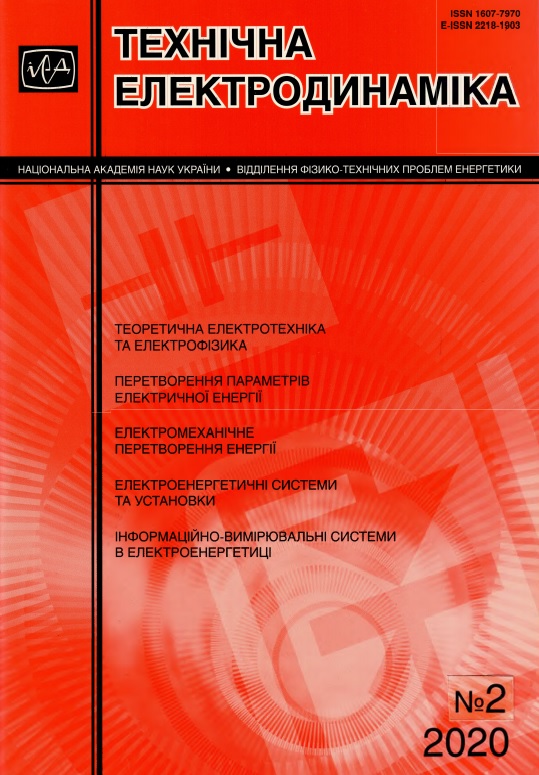Abstract
The paper proposes the architecture of deep learning neural network for short-term nodal electrical load forecasting. The neural network combines the recurrent module LSTM (Long short-term memory) and the multilayer perceptron on the top. Input and output of the network connected with shortcut connection. In multilayer perceptron used scaled exponential linear unit (SELU) function as a nonlinear transformation in hidden neurons. A comparative analysis of two approaches to the short-term prediction of node loadings of the grid is conducted. In the first approach, a separate model based on the artificial neural network eResNet is built for each load node. In the second approach, vector prediction of the values of the nodal load is performed using the proposed neural network. The second approach makes it possible to exploit the relationship between the loads in the nodes and reduce the number of computational operations required to build the model, especially at a large number of nodes. Recurrent network showed slightly better result when forecasting horizon was 24 hours, but eResNet showed more accurate forecast with longer horizons. References 16, figure 3, tables 3.
References
Chernenko P.A., Pryhno. V.L. Operational calculation of the stationary mode of energy connection with a shortage telemetry. Elektrichestvo. 1985. No 12. Pp. 12-15. (Rus)
Gusejnov F.G., Chernenko P.A. To the statistic analysis of the load node of the energy system. Problemy` tekhnicheskoi elektrodinamiki. 1971. No 30. Pp. 15-20. (Rus)
Chernenko P.A., Kuzneczov G.G. Determination of information content and short-term forecasting of periodically unsteady random processes in electric power systems. Prieprint-157. Kiev: Institut Electrodіnamiki Natsionalnoi Academii Nauk Ukrainy, 1977. P. 39. (Rus)
Valtin Yu.Yu., Meldorf M.V. Forecasting the load of power system nodes according to expert data. Trudy Tallinskogo politekhnicheskogo instituta. 1978. No 453. Pp. 17-22. (Rus)
Shumilova G.P., Gotman N.Je., Starceva T.B. Prediction of the active and reactive load of EPS units using inversion of an artificial neural network. Elektrichestvo. No 6. 2007. Pp. 7-13.
Han X.S., Han L., Gooi H.B., Pan Z.Y. Ultra-short-term multi-node load forecasting - a composite approach IET Generation, Transmission & Distribution. 2012. No 6. DOI: http://dx.doi.org/10.1049/iet-gtd.2011.0524
Falcao D.M., Bezerra U.H. Short-term forecasting of nodal active and reactive load in electric power system’. 2nd IEE lnt. Conf. on Power Systems Monitoring and Control Durham, UK, July. 1986. Pp. 18-22.
Chernenko P., Miroshnyk V. Increasing the accuracy of short-term electrical load forecasting with considering to changes in the structure of consumption during the year. Pratsi Instytutu Elektrodynamiky Natsionalnoi Academii Nauk Ukrainy. 2017. No 48. Pp. 5-11. (Ukr) DOI: https://doi.org/10.15407/publishing2017.48.005
Aoyang Han, Bin Zhang, Zhongliang Sun, Zhiqiang Niu, Junxiong Wang Nodal load forecast model considering network topology constraints. IEEE PES Asia-Pacific Power and Energy Conference. Xi'an.China. 2016. Pp. 939-943.
Hochreiter Sepp, Schmidhuber Jürgen. Long Short-term Memory. Neural computation. 1997. No 9. Pp 1735-1780. DOI: https://doi.org/10.1162/neco.1997.9.8.1735
Klambauer G., Unterthiner T., Mayr A., Hochreiter S. Self-Normalizing Neural Networks. Advances in Neural Information Processing Systems. 2017. No 30. Pp. 971-980.
Veit A., Wilber M., Velongie S. Residual networks behave like ensembles of relatively shallow networks. Advances in Neural Information Processing Systems. 2016. No 29. Pp. 550-558.
Li H., Xu Z., Taylor G., Studer C., Goldstein T. Visualizing the loss landscape of neural nets. Proceedings of the 32nd International Conference on Neural Information Processing Systems (NIPS'18). Montréal. Canada. 2018. Pp. 6391-6401.
Kingma D.P., Ba J. Adam. A Method for Stochastic Optimization. Proc. of the 3rd International Conference on Learning Representations (ICLR). San Diego. USA. 2014. Pp.1-15.
Jensen T.V., Pinson P. RE-Europe, a large-scale dataset for modeling a highly renewable European electricity system. Scientific Data. 2017. 4, 170175. DOI: https://doi.org/10.1038/sdata.2017.175
Chernenko P.O., Miroshnik V.O. Short-term electrical load forecasting for the electrical supply company with deep neural network. Pratsi Instytutu Elektrodynamiky Natsionalnoi Academii Nauk Ukrainy. 2018. No 50. Pp. 5-11. (Ukr) DOI: https://doi.org/10.15407/publishing2018.50.005

This work is licensed under a Creative Commons Attribution-NonCommercial-NoDerivatives 4.0 International License.
Copyright (c) 2020 Array






